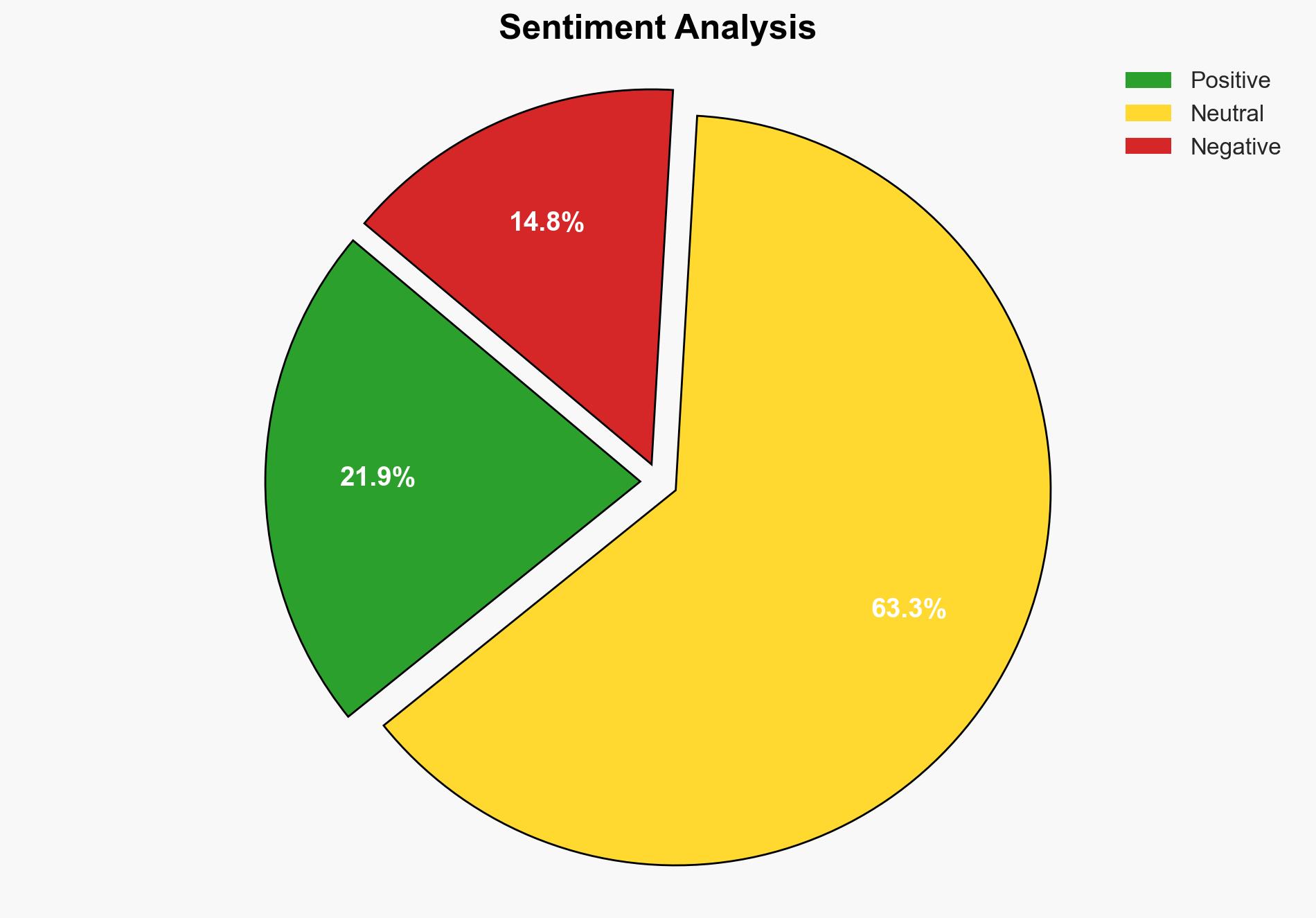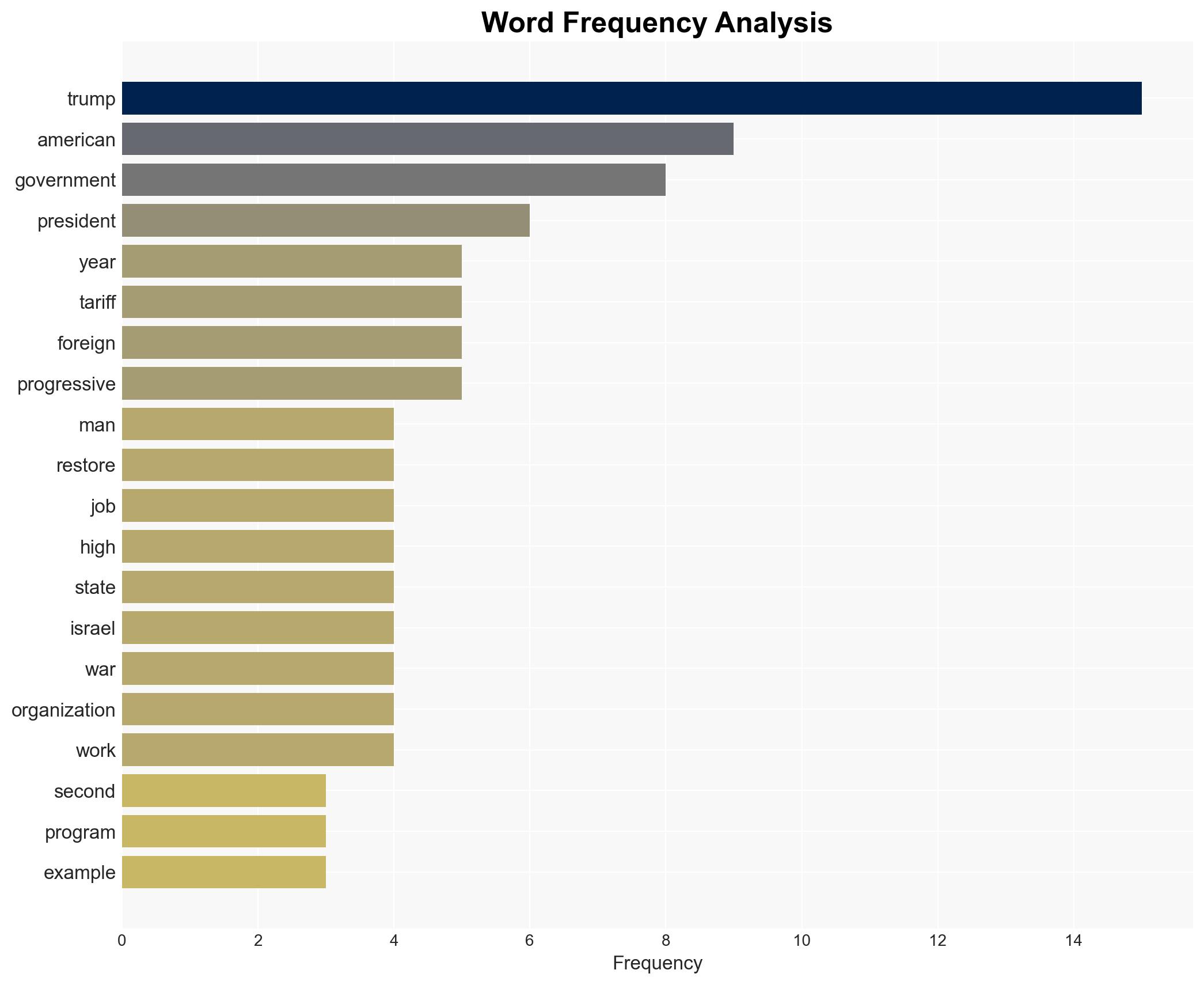Trump Redux Year One – Americanthinker.com
Published on: 2025-11-14
AI-powered OSINT brief from verified open sources. Automated NLP signal extraction with human verification. See our Methodology and Why WorldWideWatchers.
“`html
Intelligence Report: Trump Redux Year One – Americanthinker.com
1. BLUF (Bottom Line Up Front)
The analysis suggests a moderate confidence level in the hypothesis that Trump’s potential second term would focus on aggressive economic and foreign policies aimed at restoring American dominance. The alternative hypothesis, which posits a more restrained approach due to institutional checks and global pressures, is less supported. Recommended action includes monitoring policy shifts and preparing for potential geopolitical tensions.
2. Competing Hypotheses
Hypothesis 1: Trump’s second term would aggressively pursue policies to restore American economic and geopolitical dominance, characterized by protectionist economic measures and assertive foreign policy.
Hypothesis 2: Institutional checks, global economic interdependence, and international diplomatic pressures would moderate Trump’s policy ambitions, leading to a more restrained approach.
Hypothesis 1 is more likely given Trump’s historical policy preferences and rhetoric, as well as his support base’s expectations for assertive action.
3. Key Assumptions and Red Flags
Assumptions: It is assumed that Trump would have the political capital and legislative support to implement his agenda. There is also an assumption that global actors would respond predictably to U.S. policy shifts.
Red Flags: The potential for overestimation of Trump’s influence and underestimation of institutional resistance. The narrative may also reflect bias, portraying Trump’s policies as unequivocally positive without acknowledging potential downsides.
4. Implications and Strategic Risks
Potential risks include heightened geopolitical tensions, particularly with China and Middle Eastern nations, due to aggressive economic and military postures. Domestically, increased polarization and potential civil unrest could arise from contentious policy implementations. Economic risks include trade disruptions and retaliatory tariffs.
5. Recommendations and Outlook
- Monitor legislative developments and executive actions closely to anticipate policy shifts.
- Engage in diplomatic outreach to mitigate potential international tensions.
- Prepare contingency plans for economic disruptions, particularly in trade-dependent sectors.
- Best-case scenario: Successful negotiation of favorable trade deals and strengthened national security.
- Worst-case scenario: Escalation of international conflicts and significant economic downturn.
- Most-likely scenario: A mixed outcome with partial policy implementation and moderate international pushback.
6. Key Individuals and Entities
Donald Trump, Theodore Roosevelt (historical reference), China, Israel, Middle Eastern nations, Antifa, FBI.
7. Thematic Tags
National Security Threats, Economic Policy, Geopolitical Strategy, Domestic Polarization
“`
Structured Analytic Techniques Applied
- Cognitive Bias Stress Test: Expose and correct potential biases in assessments through red-teaming and structured challenge.
- Bayesian Scenario Modeling: Use probabilistic forecasting for conflict trajectories or escalation likelihood.
- Network Influence Mapping: Map relationships between state and non-state actors for impact estimation.
Explore more:
National Security Threats Briefs ·
Daily Summary ·
Methodology





